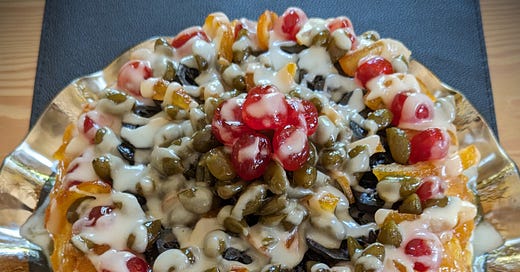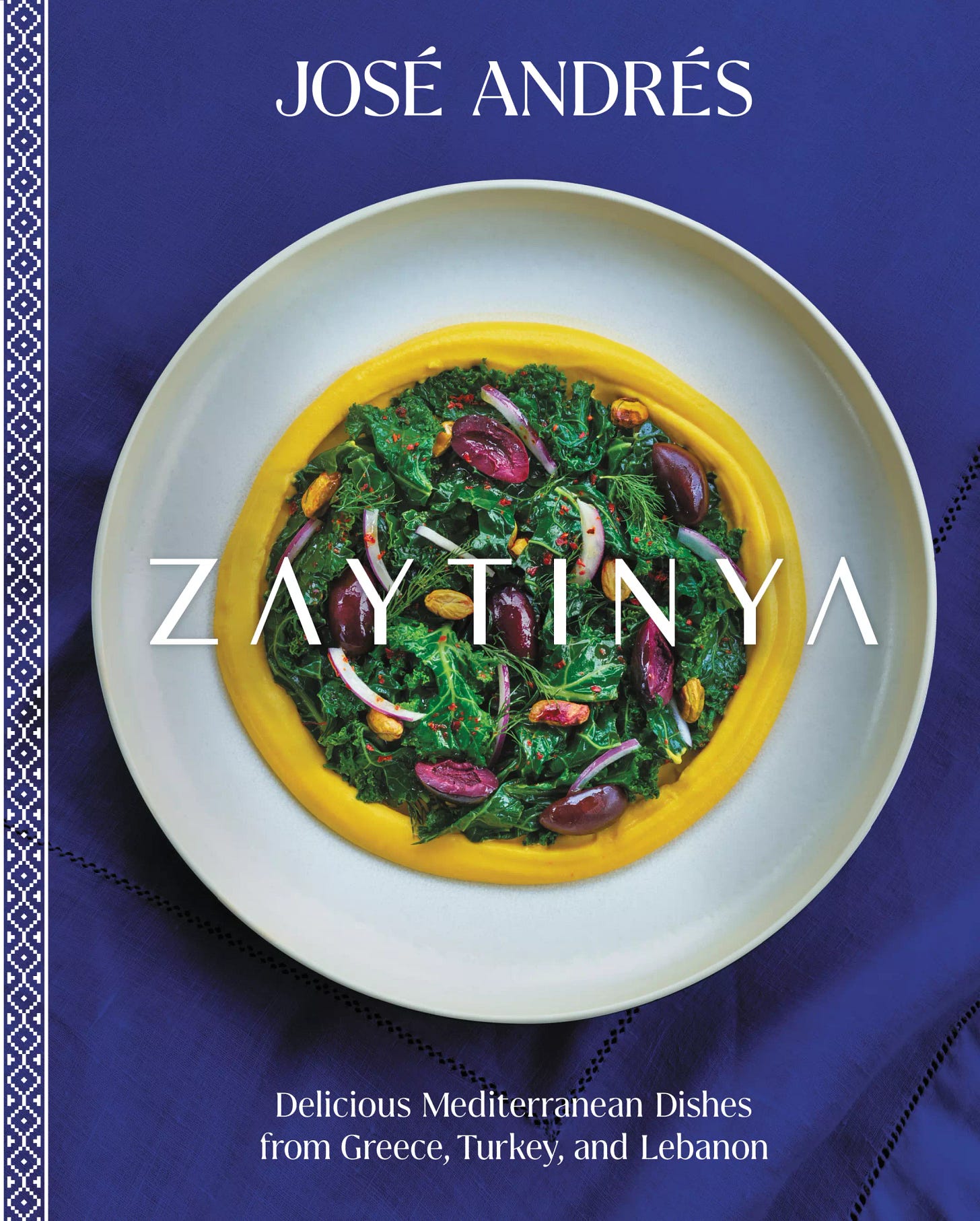A Glorious Fresh-Cheese Cake
I will make this irresistible Sicilian Cassata for Greek Easter, this Sunday!
In the spring, sheep all around the Mediterranean produce plenty of wonderfully rich, creamy milk, which is used for various regional, fresh and aged cheeses all around the region.
Ricotta-based sweets are very popular both in Greece and southern Italy around Easter time. But we cannot compare our various, often rustic treats with the gloriously decorated Sicilian Cassata.
“Documents show the cake was made by both nuns for Easter and Sicilian Jews for Purim,” wrote Daniela Galarza in Eater, quoting various authors, among them our dear friend, historian, and author Mary Simeti who said that cassata was the “invention of a pastry chef from Palermo in the 1870s who had made an excessive amount of candied fruit and used it to decorate a ricotta cake, which was and still is a common cake in Sicily.” Some authors quoted in the article link the elaborate cake with the Arab occupation of Sicily, claiming that it was the result of the introduction of sugar by the Arabs, a theory Simeti dismisses, and I totally agree with her.
In ancient Greek and Roman texts we find many descriptions of cakes made with fresh cheese which are sweetened with honey.
We can assume that later, when sugar became available and affordable, it replaced honey in the popular spring sweets.
Delicious, intricate myzithropites from Tinos island, baked and sent to us be by the brilliant Nikoletta Foskolou.
Easter myzithropites (ricotta pies) are baked in many parts of Greece. On Santorini and other Cycladic islands melopita (honey-ricotta pie) scented with mastic, lemon zest, and/or cinnamon is the traditional festive sweet, as I wrote in my Foods of the Greek Islands.
But we cannot compare these delicious, yet rustic treats with the glorious Sicilian cassata which is the cheesecake par excellence!
Unfortunately, the numerous current American versions of cheesecake use packaged, tasteless ‘cream cheese’ and that version has been adopted by bakers all around the world, as well as in Greece(!) These American-inspired cheesecakes are far from the delicious, if less refined, traditional fresh-ricotta desserts of the Mediterranean.
I make my cheesecake with real cheese, and you can see my version of myzithra (ricotta) and feta cheesecake.
My recipe for a somewhat simpler Sicilian-inspired cassata from Palermo is adapted from the ones I found in various Italian (not Italian-American) recipe blogs.
Strangely, for me the harder part was the glaze because I had never made it before. But I know most people are used to making it, as it is the same used to decorate cookies and gingerbread ornaments…
Here is how the cake is prepared in the old, renowned Pasticeria Caffe Spinnato, in Palermo, where fragrant candied citron is very important but unfortunately difficult to find in Greece.
Sicilian bakers like to use sponge cake and green-colored almond paste, but in my simpler version of the sweet I just use slices of my Orange or Lemon Olive Oil Cake. But you can certainly use any Sponge Cake you like, or my Pandespani.
“José Andrés spends much of his time contemplating the unifying nature of food, both in and out of the world’s most dangerous conflict and disaster zones,” wrote Stephanie Breijo, at the Los Angeles Times. “Days before an Israeli airstrike killed seven members of his aid organization working to feed Palestinians in Gaza, Andrés spoke to The Times about his recently published cookbook Zaytinya,” Breijo wrote.
“‘I wish that the world was run by people that cook and feed, because this is something that brings everybody together,’ Andrés said on a phone call three days before the attack,” wrote Breijo.
Having lost two of our fig trees, we read carefully at the Aramco World the piece about “The resilience of these ancient trees that prompted a research initiative to study the fruit’s potential as a sustainable crop for Mediterranean farmers.”











Michael Costa, the Zaytinya chef told me you can find very good sheep's milk ricotta in the US, I think he said from Vermont.
These look delicious! And also love the link to the article about fig trees and how they can help us adapt to a changing climate.